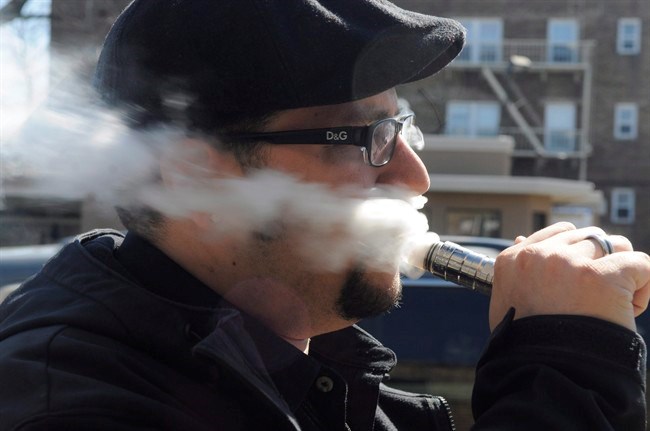E-cigarettes are a replacement for tobacco, not a gateway to it, according to a new study by the University of Victoria’s Centre for Addictions Research of B.C.
Researchers also found that vapour from e-cigarettes is less toxic than cigarette smoke, since it does not release tar.
The report, Clearing the Air, found that vapour emissions contain 18 of the 79 toxins found in cigarette smoke, including considerably lower levels of cancer-causing agents and volatile organic compounds. The vapour is airborne for less than 30 seconds compared to 18 to 20 minutes for tobacco smoke, which substantially reduces exposure to second-hand smoke.
“Fears of a gateway effect are unjustified and overblown,” said Marjorie MacDonald, the report’s lead investigator. “From a public-health perspective, it’s positive to see youth moving towards a less-harmful substitute to tobacco smoking.”
Evidence suggests that fewer young people are smoking tobacco, while use of vapour devices among youth has been increasing.
This is backed by data from the Canadian Tobacco, Alcohol and Drugs Survey, which showed that in 2015, 26 per cent of Canadians aged 15 to 19 reported having tried an e-cigarette, an increase from 20 per cent in 2013.
Tim Stockwell, the centre’s director and co-principal investigator, said the public has been misled about the risks of e-cigarettes.
“Many people think they are as dangerous as smoking tobacco, but the evidence shows this is completely false,” Stockwell said.
Researchers found evidence that e-cigarettes could be as effective as other nicotine replacements to help cigarette smokers quit.
MacDonald said e-cigarettes have polarized the public health community, with some medical studies supporting them as a harm reduction tool and others claiming e-cigarettes increase the chances young people will become addicted to nicotine and pick up smoking.
MacDonald said it’s important to recognize the implicit bias in e-cigarette research. Some studies have been funded by the tobacco industry, which has a large stake in e-cigarettes.
In November, the federal government introduced legislation called the Tobacco and Vaping Products Act, aimed at keeping e-cigarettes out of the hands of children while allowing smokers access to a device that is healthier than tobacco products. The proposed legislation would ban the sale and promotion of all vaping products to anyone under 18 and prohibit the promotion of candy flavours that appeal to youth.
The Canadian Medical Association has recommended that the legal age to buy e-cigarettes should be the same as the age for tobacco purchasing in the province or territory.
MacDonald cautioned that some studies in the U.S. showed youth who are banned from accessing e-cigarettes will turn to smoking instead.
“By banning the use of vaping devices by young people, you might actually be driving them to conventional smoking,” she said. “Let’s make sure that the devices are safe, that they’re regulated, that we have regulation on the liquids that go into them.”
The UVic report does not rule out all harmful effects of vaping.
Some devices could contain concerning levels of metals and particulate matter, and there’s still not enough research on the carcinogens that might be present.
The research, funded by the Canadian Institutes of Health Research, was based on a review of 170 articles identified as relevant out of 1,622 total articles on e-cigarettes.



